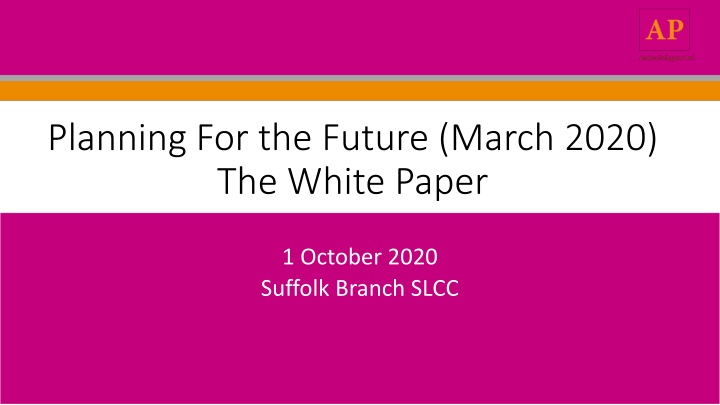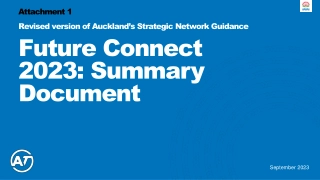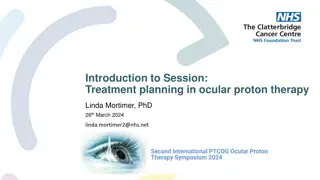Planning For the Future (March 2020)
The NPPF 2012's shift, incentivizing private sector for housing and infrastructure, discarded regional planning for duty to cooperate. Updates in 2018/2019 clarified viability, introduced new housing need assessment, and stressed on local plan reviews and neighborhood involvement.
Download Presentation

Please find below an Image/Link to download the presentation.
The content on the website is provided AS IS for your information and personal use only. It may not be sold, licensed, or shared on other websites without obtaining consent from the author.If you encounter any issues during the download, it is possible that the publisher has removed the file from their server.
You are allowed to download the files provided on this website for personal or commercial use, subject to the condition that they are used lawfully. All files are the property of their respective owners.
The content on the website is provided AS IS for your information and personal use only. It may not be sold, licensed, or shared on other websites without obtaining consent from the author.
E N D
Presentation Transcript
Planning For the Future (March 2020) The White Paper 1 October 2020 Suffolk Branch SLCC
Welcome! Dr Andrea Pellegram, MRTPI andrea@pellegram.co.uk
About me About me Chartered Town Planner since 1991 I have worked in strategic planning in London, County Matters (minerals and waste) at Surrey CC, Director of Development Services at Cotswold DC, private sector applicant for a waste company Now I focus on Neighbourhood Planning and working with Local Councils to engage effectively with the town planning system
Health warning Health warning The view in this presentation are my personal views based on my experience working with local councils. We can discuss the implications at the end of the session.
There are 22 proposals in this White Paper Sit back and listen
The Governments approach to town planning The Government s approach to town planning The NPPF 2012 was a radical departure from the previous system proposed under the Coalition Government A much simpler process in a short national statement Focus on housing delivery and economic development Private sector incentivised to pay for housing and infrastructure and reduce burdens on public purse Discarded regional planning in favour of duty to cooperate Para 11 policies go out of date if there is no 5 year housing land supply
The NPPF was updated in 2018/2019 The NPPF was updated in 2018/2019 Approach to viability and increase in land value clarified (future land value replaced by existing use value with uplift) Methodology for housing need assessment introduced Requirement to review local plans every 5 years Incentive for neighbourhood plans to allocate housing land in para 14 Local Development Orders and Neighbourhood Development Order retained but moved to the front of the document
The proposed changes come a year after the The proposed changes come a year after the last changes last changes We do not know how the current revision of the NPPF will bed down There have been changes to the Use Class Order that allow greater flexibility in town centres and to create new housing this has not yet been tested
The Governments critique The Government s critique It s based on the Town and Country Planning Act 1947 and is no longer fit for purpose too discretionary, complex and slow Local Plans take too long to prepare Assessments and evidence are too complex and non-planners don t understand them There is a loss of public trust in how housing land is identified Developer contributions negotiations take too long and are too complex There is not enough focus on good design Not enough homes are being built
Are the critiques fair? Are the critiques fair? We could argue that planning authorities are only following the Government s own rules, but .. We could also agree that it is too complex, that non-planners struggle to understand the system, and that developments do not always benefit host communities as much as they benefit developers
Pillar 1: Planning for development Pillar 1: Planning for development Local Plans should become focused on where they can add real value and plans should: 1. Identify appropriate levels of and locations for land in a way that is easy to understand 2. Communicate clearly and visually so that they are easy to understand 3. Use standardised data to create a strategic national map 4. Be created in a standard process 5. Better engagement with local communities 6. Set clear expectations on what is required on identified land.(26)
Proposal 1: The role of land use plans should be simplified. We propose that Local Plans should identify three types of land Growth areas suitable for substantial development, Renewal areas suitable for development, and areas that are Protected.
What I think. What I think . Overall this is oversimplified and will not help make the system deliver better results Currently every proposal is judged on its own merits Some proposals are poor and should not proceed. Do we want poor quality development?
I dont think this is different from what we I don t think this is different from what we already have (just a different name) already have (just a different name) Growth Site allocations in Local Plans identify areas for growth and usually contain policies that set out what is expected Development/Settlement boundary policies already identify areas where development is expected Green Belt, AONB, SSSI, Conservation Areas, Flood Zones 2 and 3 area already protected Renewal Protect
Proposal 2: Development management policies established at national scale and an altered role for Local Plans.
I love this one! I love this one! Local Plans reiterate national policy in their development management policies Local Plan policies are tested against the NPPF and cannot deviate It would be simpler for everyone if these policies were set nationally
Proposal 3: Local Plans should be subject to a single statutory sustainable development test, replacing the existing tests of soundness.
Not sure about this one Not sure about this one The current tests of soundness are: Positively prepared Justified Effective Consistent with national policy
This is a burdensome process that sometimes adds little value because it reiterates that decision-making approach followed in the Local Plan as it is prepared. My verdict: tighten up the process for making Local Plans by setting out a national methodology and this will not be necessary. Abolish Sustainability appraisal This is interpreted differently in every authority because there is no clear national approach. A nationally defined approach would be helpful. (Remember that regional planning bodies were abolished!) Duty to Cooperate The problem is that deliverability is in the hands of the land owner and not the planning authority. Most sites can be made deliverable but this may cost money. Overall, the White Paper should pay more attention to the developers who do not build-out their permitted developments. Deliverability would be slimmed down
Proposal 4: A standard method for establishing housing requirement figures which ensures enough land is released in the areas where affordability is worst
Im not sure about some of these proposals I m not sure about some of these proposals The Standard Method has been prepared by the Government They are criticising themselves so why not just introduce a better method? It appears that the White Paper is proposing to distribute the 300,000 annual housing target This would put central Government in charge of deciding where housing would go it would not longer be based on local need The focus will be on areas with least affordability or historic under supply The least affordable areas are those where there is no development land. Will densification make Chelsea more affordable? Higher densities on brownfield sites Many brownfield sites are in areas where housing is not appropriate these sites need to be redeveloped, but not necessarily to a high density Make allowance for non-housing land requirements Yes Include a buffer where there is a drop off rate between permissions and completions This is penalising the area (and the communities there) where it may be better to focus on why planning permissions are not being built out
Proposal 5: Areas identified as Growth areas (suitable for substantial development) would automatically be granted outline planning permission for the principle of development, while automatic approvals would also be available for pre-established development types in other areas suitable for building.
Is automatic planning permission different from outline planning permission? The details will still need to be considered. More LDOs? More NDOs? More Masterplans? New towns in Development Consent Orders under Nationally Significant Infrastructure Projects?
Are automatic approvals really just permitted development rights? No changes proposed for protected areas There may be limitations on how neighbours can comment on planning applications.
My verdict? My verdict? Land allocations would benefit from clearer policies about what is required and masterplan policies work well. To make these work, the details need to be agreed with landowners as the Local Plan is prepared. Who pays? It will require very specific national development management policies that are not subject to interpretation. Yes, this will probably work and be an improvement but it s not that different from what we have. It requires plan- makers to do more work up front. It also limits opportunities to put views forward at the plan making stage and not at the application stage.
Proposal 6: Decision-making should be faster and more certain, with firm deadlines, and make greater use of digital technology
No more slippages in determination time for applications Greater digitalisation of planning applications Planning statements limited to 50 pages Supporting evidence to applications to be digital and based on standard data requirements
My verdict? My verdict? Often, slow decisions are due to poorly prepared applications. Is it fair to blame LPA s when applicants create the problem? Digitalisation of applications will be a big time-saver to a point but please, no AI decisions! It is not possible to describe mitigation for a complex polluting application (such as a waste to fuel plant) in 50 pages!
Proposal 7: Local Plans should be visual and map-based, standardised, based on the latest digital technology, and supported by a new template.
I love this. I love this . National guidance on how to prepare map- based plans with data standards Evidence will be web-based and not document based There will be supporting geospatial data requirements
we want to support local authorities to radically rethink how they produce their Local Plans, and profoundly re-invent the ambition, depth and breadth with which they engage with communities.
Proposal 8: Local authorities and the Planning Inspectorate will be required through legislation to meet a statutory timetable for key stages of the process, and we will consider what sanctions there would be for those who fail to do so.
Local Plans to be produced in 2.5 years Local Plans to be produced in 2.5 years Stage 1: Call for sites (6 months) This should be possible but will require more staff than currently available. Stage 2: Preparation of draft (12 months) Since there will be no development management policies, this will be a site allocation with the preparation of masterplans, plus any necessary design codes Stage 3: consultation with both Secretary of State and all other stakeholders (rather than two subsequent consultations) (6 weeks) Why not consult on both simultaneously? This makes sense. However, it takes a long time to analyse all the responses. Is this long enough? Stage 4: Examination by Inspector (9 months) Not sure that this is enough time to rewrite the proposals in light of the consultations AND have an inquiry. Stage 5: Prepare map and text (electronic platform) (6 weeks) This should be possible
Proposal 9: Neighbourhood Plans should be retained as an important means of community input, and we will support communities to make better use of digital tools
This makes sense, but. This makes sense, but . Yes, please retain neighbourhood plans! Should focus on proposals in local plans More emphasis on design Also be on new digital mapping platform Go down to very small areas (streets)
But. But . But let s not forget about local infrastructure, local knowledge and local aspirations! Urban design is a highly refined skill and non- planners will need support to do it well Parish Councils will also need support with digitalisation
Proposal 10: A stronger emphasis on build out through planning
Build out depends on the applicants following through on their permissions. There is nothing in the White Paper that penalises developers from creating landbanks. All the focus is on Local Government. Is this fair?
Proposal 11: To make design expectations more visual and predictable, we will expect design guidance and codes to be prepared locally with community involvement, and ensure that codes are more binding on decisions about development.
Design codes must be prepared with community involvement to reflect local character National codes will be prepared where there is no design code in place
Not sure Not sure This will mean that Character Assessments in NDPs will be given more weight But design is a refined skill. Not many of us have this skill. How do we learn it? Will national codes be clear enough to create good design? Will this lead to national homogenisation?
Proposal 12: To support the transition to a planning system which is more visual and rooted in local preferences and character, we will set up a body to support the delivery of provably locally-popular design codes, and propose that each authority should have a chief officer for design and place-making.
I agree with this I agree with this A new body can be established that will deliver new skills to ALL plan-makers and who can champion best practice Design skills are also needed in planning departments
Proposal 13: To further embed national leadership on delivering better places, we will consider how Homes England s strategic objectives can give greater emphasis to delivering beautiful places.
Proposal 14: We intend to introduce a fast- track for beauty through changes to national policy and legislation, to incentivise and accelerate high quality development which reflects local character and preferences.
The White Paper proposes The White Paper proposes NPPF to require that local design codes carry weight Masterplans and/or codes will be required for major allocations (as part of the plan-making process) Further changes to permitted development including use of pre-agreed designs (but still need prior approval)
My verdict? My verdict? I m happy to see that neighbourhood plan design policies will be given more weight, but I ve prepared a few and they are difficult to do well. This is asking a lot of volunteers who prepare neighbourhood plans.
Proposal 16: We intend to design a quicker, simpler framework for assessing environmental impacts and enhancement opportunities, that speeds up the process while protecting and enhancing the most valuable and important habitats and species in England.
Strategic Environmental Assessment, Sustainability Appraisal, and Environmental Impact Assessment can lead to duplication of effort and overly-long reports which inhibit transparency and add unnecessary delays
I agree with this I agree with this There are too many processes that do the same thing Environmental impacts MUST be considered but a single method would be preferable to the multiple requirements we currently have























